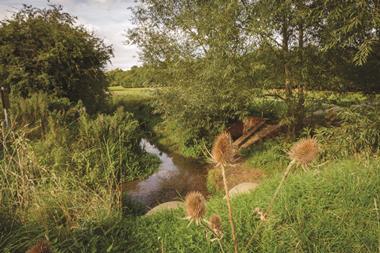COP26 has brought into sharp focus the gap between promises to limit environmental damage and real action. As individuals, we want to do what is right; as businesses, demonstrating green credentials is becoming increasingly important to customers and employees alike.

It is well known that the built environment contributes a huge proportion of the UK’s total carbon footprint – around 40% according to the UK Green Building Council (UKGBC). Doubtless, if you ask any individual involved in property, they will tell you they want to be environmentally responsible. The problem is that too often adopting unfamiliar industry practice creates challenges and obstacles.
As green provisions are thrust further into the limelight, several respected property industry bodies have published guidance and information to help us understand what we should be doing. UKGBC has set out its aims to “radically improve the sustainability of the built environment, by transforming the way it is planned, designed, constructed, maintained and operated”. A key project is its work with its European counterparts to develop a roadmap, launched at COP26, for reducing built environment emissions in line with limiting global temperature rises to below 1.5 degrees.
The Better Buildings Partnership (BBP) has created a benchmark of environmental performance for ‘in-use’ commercial property in the UK, covering energy, carbon, water and waste performance for offices, shopping centres, retail/leisure parks and offices, which others can use to compare the performance of their own buildings. The British Retail Consortium has a similar initiative, focused on social impact and wellbeing as well as bricks-and-mortar, seeking to promote collaborative action and public accountability of its member businesses.
Green leases have been around for many years, but what is needed is best practice recommendations to ensure owners and occupiers understand what arrangement fits best with their circumstances. The BBP Green Lease Toolkit gives green recommendations on energy, water, waste and other services, works and reinstatement for landlords and occupiers. The key message here is to share information and data to enable sensible strategies and, above all, collaborate.
Despite these resources, green leases are still few and far between. To bring them to into the mainstream, it must become common practice for property agents to include in heads of terms green principles that the parties are happy to commit to. Commercial property lawyers must get familiar and comfortable with green clauses, helping landlords and occupiers understand the implications so that they are not afraid to sign up to them.
It is time to think beyond the traditional way of doing things. Many of the changes we need to progress towards net zero are not difficult or radical. They simply take a moment’s reflection to do things differently to how they have been done in the past.
Ingrid Saffin is a partner at Charles Russell Speechlys
































No comments yet